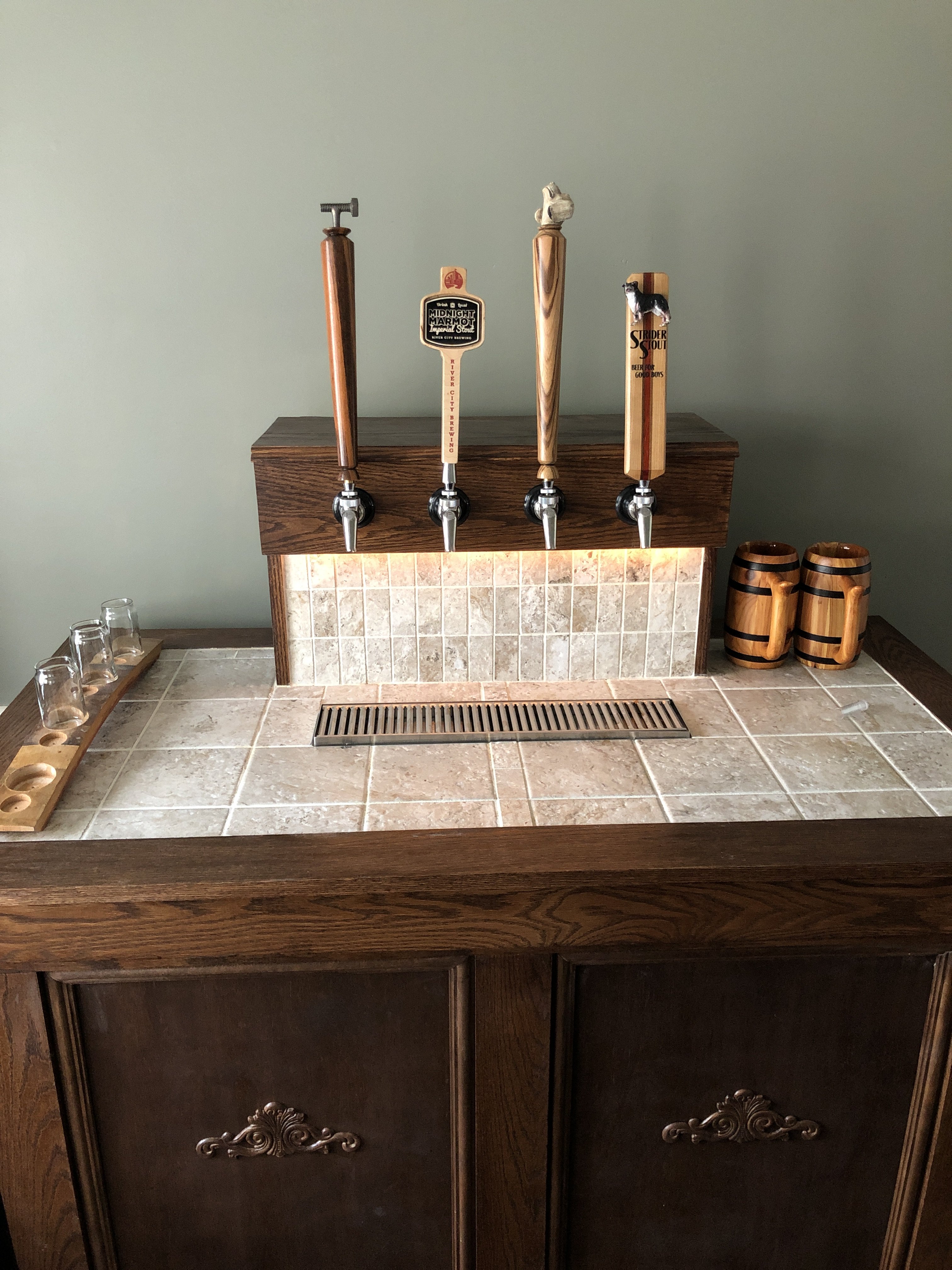I personally keep a lot on hand for maintenance (I do have around 90 kegs though, so it is a lot to maintain!).
I'd recommend having spare o-rings of all three main sized on hand (dip tube, post, lid), keg lube, spare poppets, spare CO2 regulator seals (I prefer the plastic ones), deep socket that fits all your keg posts ( I have three, one with cutouts for pin lock, and two for the different sizes of ball lock posts), spare tubing to replace when needed, and any clamps that you use (I use push to connect fittings now, so I don't use clamps, but when I did, I prefered the tongue and groove oetiker clamps). A spare PRV is nice to have on hand as well. I keep star san in a spray bottle for leak detection. A faucet wrench should be in your toolbox too (it looks like a mini sickle with a post that engages with the faucet collar. I always keep a couple extra faucet o-rings too.
From there, handy tools I like to have on hand: channel lock pliers, knipex raptor pliers (they look funky, but work really well!), utility blade, tubing cutter, yellow teflon tape (it is a bit thicker), spare QD's and other fittings (I keep spare john guest fittings on hand, along with a bunch of other sized fittings for when needed). A rubber mallet is great if a lid is every really stuck in the opening.
Nice to haves, but nowhere near required: spare faucets and shanks, and related fittings, test gauge (I built one around a .1% accuracy Wika test gauge to check all my regulators and gauges), spare manifold, spare gauges (I prefer Winters P9S, I've swapped all mine out for these, and keep a few spares on hand, just in case). A big funnel for pouring sanitizer is handy. If you like to dry hop, getting one of those stainless mesh cannisters is convenient too.
This was all off the top of my head, if I remember anything else, I'll post another reply! (maybe I'll just go down to the beer room and take some pictures).


























































